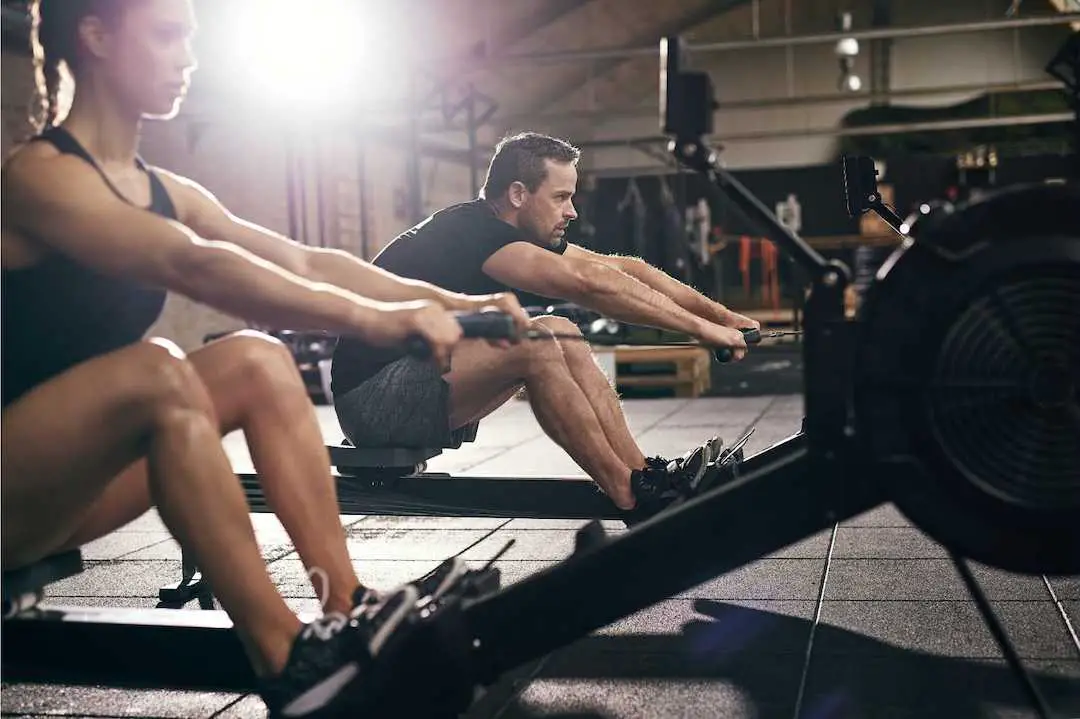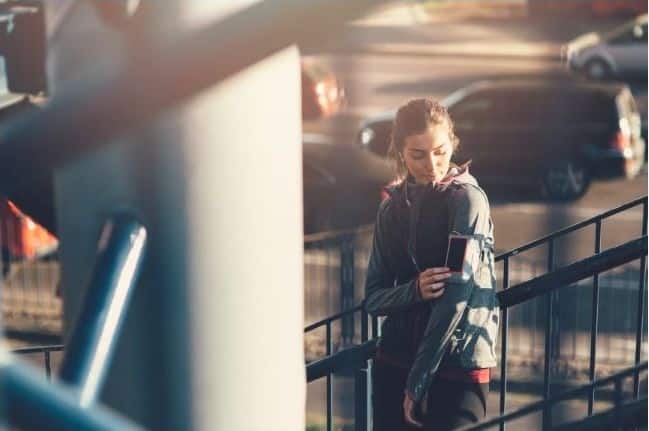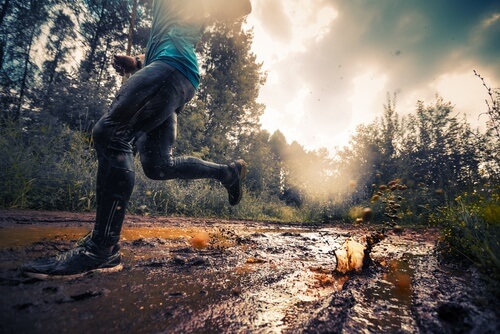Best Running Shoes for Peroneal Tendonitis
This page contains affiliate links. As an Amazon Associate I earn from qualifying purchases.
Peroneal tendonitis is a common problem among runners who have just increased their milage, for example, going from running a half marathon to training for a full.
This problem occurs because of repeated force or overuse of the peroneal tendons that are found on either side of the foot. They keep your foot balanced and provide support and spring while running. When the tendons get swollen or enlarged, you will be in pain for quite some time as the tendons do not heal quickly and the problem may even worsen if you continue to run.
However, with the right running shoes for peroneal tendonitis, along with proper form, you may be able to prevent the recurrence of this injury once it has healed.
Continue below as we discuss the newest and best running shoes for peroneal tendonitis on the market today.
Quick Look at Our Top Picks:
| IMAGE | PRODUCT | DETAILS | ||
|---|---|---|---|---|
|
BEST OVERALL
|
BEST OVERALL
|
|
View on Amazon → | |
|
Runner Up
 |
Runner Up
|
|
View on AllBirds → | |
|
Best Affordable
 |
Best Affordable
|
Reebok Floatride Run Fast
|
|
View on Amazon → |
|
Most Popular
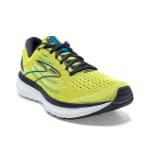 |
Most Popular
|
|
View on Amazon → | |
|
BEST NEWCOMER
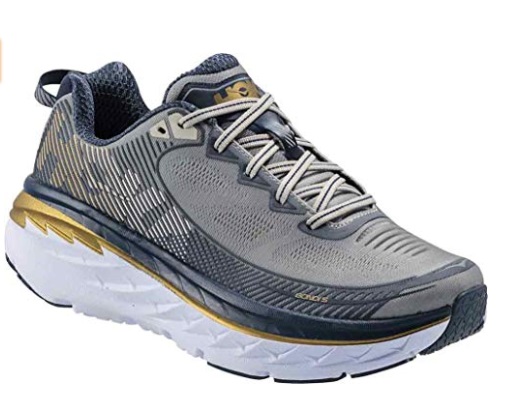 |
BEST FOR BUDGET
|
|
View on Amazon → |
Quick Navigation
What is Peroneal Tendonitis?
Peroneal tendonitis is the swelling or enlargement of the peroneal tendons, and major symptoms of this injury include pain and swelling around the ankle.
The area becomes sensitive and feels tender to the touch. You might find it difficult to move your ankle or foot, and you may even find walking difficult.
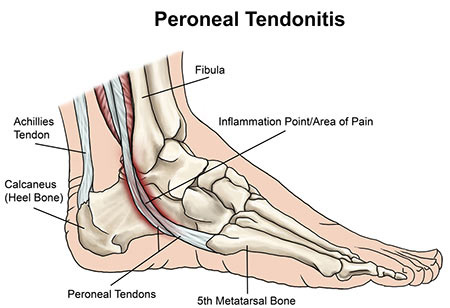
Tendons connect muscle to bone. There are two peroneal tendons, both on the outside (or lateral) side of the foot. The peroneus longus is longer and runs up your leg and all the way underneath your foot, while the peroneus brevis is shorter and connects to your lower leg and stops at the fifth metatarsal. Their primary job is to turn the foot and ankle to the outside. This is why running form is so important.
What Causes Peroneal Tendonitis?
Improper form, rapid increases in training volume, or poorly fitting shoes cause peroneal tendonitis. Runners that have high arches are more susceptible to peroneal tendonitis because their heel turns inward as they run, causing the tendons to work harder to turn the foot and ankle to the outside.
What to Consider in Running Shoes for Peroneal Tendonitis
When you suffer from peroneal tendonitis, a well-fitting shoe is the most important tool for prevention! If you have high arches, or your foot tends to turn toward the inside, a more supportive shoe that prevents your foot from turning inward is key.
Running shoes designed for more support and under-pronation can help prevent injuries to the peroneal tendons. If you are already suffering from this tendon injury, they can also help speed-up the healing process.
Now let’s look at some features that you should consider.
- Proper fit – Shoes that fit loosely may cause your ankle to do more work to stabilize the foot which causes overuse of the peroneal tendons when running long distances. It is essential that the shoe you choose matches the shape of your foot; some shoe brands tend to be wider (Altra) and others more narrow (Nike). For this reason we recommend trying them on in person, and then purchasing them online to get a better deal, but only after you have already tried that specific shoe on.
- Shock absorption properties – Overworked tendons are the main cause for peroneal tendonitis. This can happen due to lack of shock-absorption features. Look for running shoes that have shock absorption properties such as gel or air cushioning. You can also buy shoes that have multiple layers on the insole. Read more about the best insoles for running here
- The right support – Your ankle is the most vulnerable part of your body when you run. That’s because most of the stress is transferred to the ankle, and why you should run with proper form – hitting the ground with your midfoot first. A decent support system for the the heel may help prevent injury on your runs. Our feet are not designed to run on concrete, so support is very important when running on hard surfaces. Most of us run in on hard surfaces, and without the right support, the ankle and tendons will have to bear the repeated force and wear.
- A lightweight shoe – A lightweight shoe requires you to use less force to turn your foot or keep it straight. A light shoe reduces the stress on your tendons if you tend to overpronate. A heavy shoe will stress your heels and ankles, thereby increasing the likelihood of an injury. A light shoe makes running a pleasant and comfortable experience.
Alright! Now that the basics are out of the way and you have a solid understanding of the issue and what to look for in a shoe to prevent it, we will get on with the newest and best running shoes for peroneal tendonitis on the market today.
Best Rated Running Shoes for Peroneal Tendonitis Reviewed
The following running shoes are the best picks for dealing with peroneal tendonitis.

- Versatile (Fast or slow runs)
- Soft
- Bouncy
- Comfortable
- May Feel Roomy in the Heel
- Versatile (Fast or slow runs)
- Soft
- Bouncy
- Comfortable
- May Feel Roomy in the Heel
That aside, this shoe has a completely new mesh upper that improves from the previous version, locks your foot down perfectly. The heel counter wraps around towards your achilles tendon, which increases the lockdown and feeling of support. The midsole ride is excellent and provides more than enough cushioning while keeping the shoe light. Overall, it is an excellent, neutral shoe that will do wonders in terms of preventing injuries to your tendons.
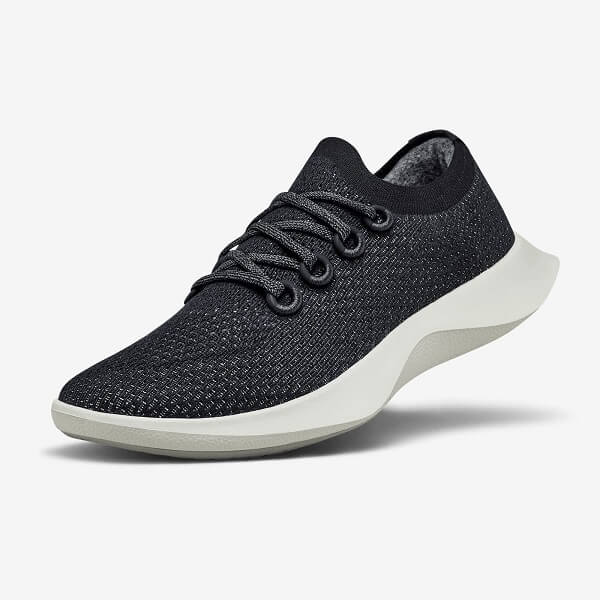
- All-natural
- Comfortable
- Breathable
- Lightweight
- Well-cushioned
- Just one style available (for now!)
- All-natural
- Comfortable
- Breathable
- Lightweight
- Well-cushioned
- Just one style available (for now!)
We’ll start with performance and support, since that’s what matters most when you’re dealing with peroneal tendonitis. The flared outsole and rubber traction pads offer exceptional stability, increasing pronation control and keeping your feet aligned while you focus on the road ahead. A cushioned Merino wool heel support contributes to the overall feeling of security.
Next, comfort and breathability: A unique knitted fabric made from sustainable eucalyptus fiber wraps your feet making you feel well-supported. The fit is flexible, so the muscles and tendons in your feet are free to work as nature intended. It is also lightweight, at 9.7 oz. (275 g) for a US M8.0.
Finally, this shoe looks great, so much so that we’ve been wearing it as a casual street shoe too. Choose from several beautiful color combinations and get ready to get back into the sport we love.

- Exceptionally light weight
- Well cushioned
- Flexible feel
- Highly responsive
- Grippy outsoles
- Might run a touch small
- Less stability than some stiffer options
- Exceptionally light weight
- Well cushioned
- Flexible feel
- Highly responsive
- Grippy outsoles
- Might run a touch small
- Less stability than some stiffer options
If you’re looking to train for your next marathon, your search for the best distance running shoe might be over. Reebok Floatride Run Fast running shoes are specifically designed to keep feet in great shape for long distance runs including marathons. If shorter runs are more your speed, no worries! You’ll stay comfortable whatever your goals.

- Lots of Cushioning
- Soft
- Comfortable Lacing
- Heavier than most
- Lots of Cushioning
- Soft
- Comfortable Lacing
- Heavier than most
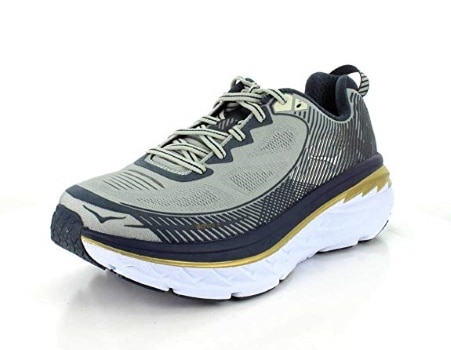
- The ortholite foot bed offers comfort and allows for quicker healing of any foot injury
- Enhanced shock-absorption due to larger outsole
- Has a wide toe box for those with wide feet
- Despite the large cushioning, the shoe is very light
- This shoe is quite expensive
- Some runners complained that the tongue caused irritation to their feet
- The ortholite foot bed offers comfort and allows for quicker healing of any foot injury
- Enhanced shock-absorption due to larger outsole
- Has a wide toe box for those with wide feet
- Despite the large cushioning, the shoe is very light
- This shoe is quite expensive
- Some runners complained that the tongue caused irritation to their feet
This shoe’s large outsoles provide the required shock-absorption for any runner suffering from a tendon injury, while retaining enough spring. Many reviewers have testified that the Bondi 5 has allowed them to get back to running after injuries such as plantar fasciitis and tendonitis.

- Gel Cushioning Absorbs Shock
- Durable Materials
- Lightweight
- Too much arch support for some
- Gel Cushioning Absorbs Shock
- Durable Materials
- Lightweight
- Too much arch support for some
They offer great support for those with high arches, and will keep your foot and ankle stable as you run. The engineered mesh upper is made of recycled materials and can be stretched in multiple directions. Because of the upper and its wide toe box, the shoe is ideal for those with wide feet. This is an excellent choice, and its many five-star reviews are a testament to that.

- Durable as it uses the pigskin and ENCAP midsole
- The EVA has extra cushioning and molds to the shape of your feet
- Comes in different and unique sizes for runners
- Has a bulky look
- Some users complained that the shoe was not flexible
- Durable as it uses the pigskin and ENCAP midsole
- The EVA has extra cushioning and molds to the shape of your feet
- Comes in different and unique sizes for runners
- Has a bulky look
- Some users complained that the shoe was not flexible
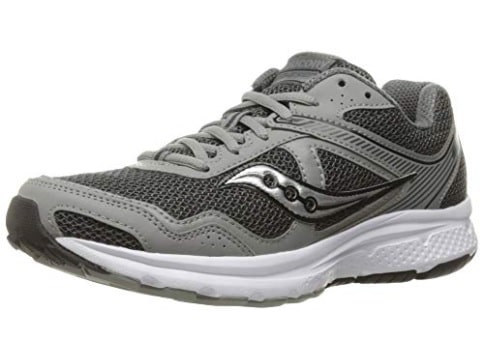
- Enhanced breathability
- Has shock absorbing power
- Built for every event
- Excellent flexibility, comfort and cushioning
- It fits small and narrow, as complained by some customers
- The sole seems to be too stiff
- Enhanced breathability
- Has shock absorbing power
- Built for every event
- Excellent flexibility, comfort and cushioning
- It fits small and narrow, as complained by some customers
- The sole seems to be too stiff
This shoe is known for its durability, and many have inserted orthotics insoles without any issue. This shoe offers a great balance of price-point and quality.

- Very Responsive
- Unique Feel
- Superb Customer Service
- Shoe runs narrow
- Stiff for some
- Very Responsive
- Unique Feel
- Superb Customer Service
- Shoe runs narrow
- Stiff for some

- Last a Long Time
- Plush
- Good Materials
- Significant Break-in Period
- May Produce Blisters
- Last a Long Time
- Plush
- Good Materials
- Significant Break-in Period
- May Produce Blisters
Finally, these shoes are a bit heavier than the others, and not as tailored to tendonitis, but because of the cushioning and quality, they are a great shoe for prevention.
How to Cope With Peroneal Tendonitis
There are different methods used to treat peroneal tendonitis, and choosing one largely depends on the nature of the injury.
- Rest – First of all, you must rest your feet. That’s because injuries occur due to the overexertion of the tendon. Running or training on your injury will continue to aggravate the injury and will not allow it to heal. Most runners opt to stop their training until the injury heals. You must be very cautious when doing basic physical activities, even when walking; consider immobilizing the foot and using crutches. If you must, do them at a slower pace and be very careful when doing so.
- Elevation & Casting – In most cases, elevation of the foot is helpful to reduce swelling. In some extreme cases, a doctor may recommend the use of a cast to restrict movement.
- Cold compress – Using an ice-pack around that area can help reduce the swelling and numb the pain. You can try ice therapy or wrap the area with ice for relief.
- Stretching – Some stretching exercises are used to treat peroneal tendonitis. These stretches are aimed at the calf muscles and work towards loosening them up. Tight calf muscles transfer stress to the mid-foot which further stresses the tendons. This should be done, however, after your recovery and are on your way to recovery. Be sure to consult a physical therapist before you stretch.
A reminder – this is not medical advice, consult a physician before implementing any of these measures.
Prevent Recurring Injuries
First, muscular imbalances may lead to recurrence of injuries in the tendons; therefore, you can visit your physical therapist to seek advice on corrective measures for your gait and posture.
Changing your running shoes is yet another easy measure that you can take to prevent the recurrence of injuries in your tendons.
High arched feet are a primary cause of peroneal tendonitis, so ensure to pick specialized running shoes that support high arches such as those shown in this article.
The best shoes are the ones that have ample cushioning and offer comfort and stability while you run.
If your current running shoes cause pain, or do not effectively absorb shock, then consider investing in a new pair.
Additionally, avoid using walking shoes for running purposes since they lack shock absorbing properties. You will not realize the difference that a good shoe can make until you get your hands on a good pair!
Final Thoughts
Therefore, the right running shoes that fit your feet properly make the entire running experience more enjoyable.
So if you are suffering from Peroneal Tendonitis or want to prevent its re-occurrence, try running shoes specifically designed to tackle this problem.
Finally, the shoes above are some of the best when it comes to dealing with any tendon related injuries and use them as a guide to explore more products.

